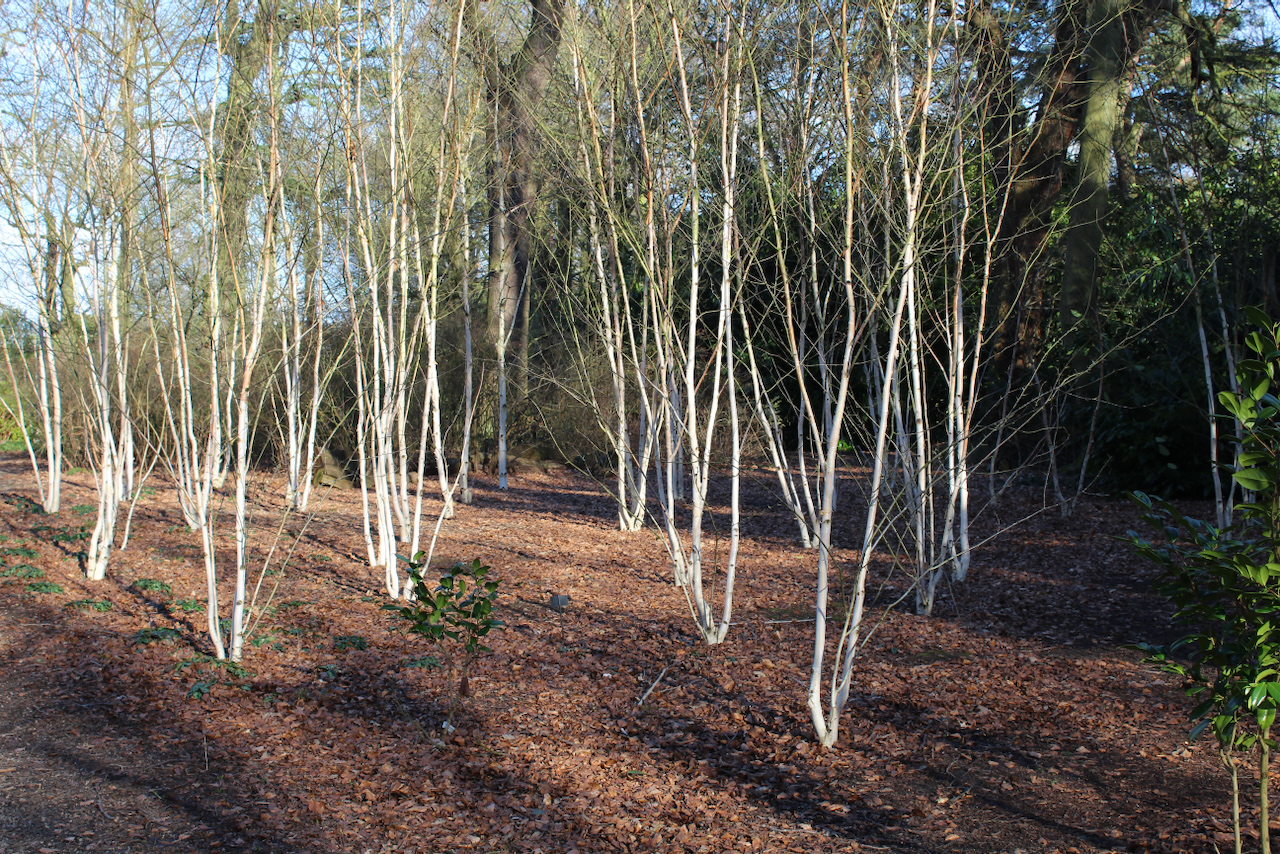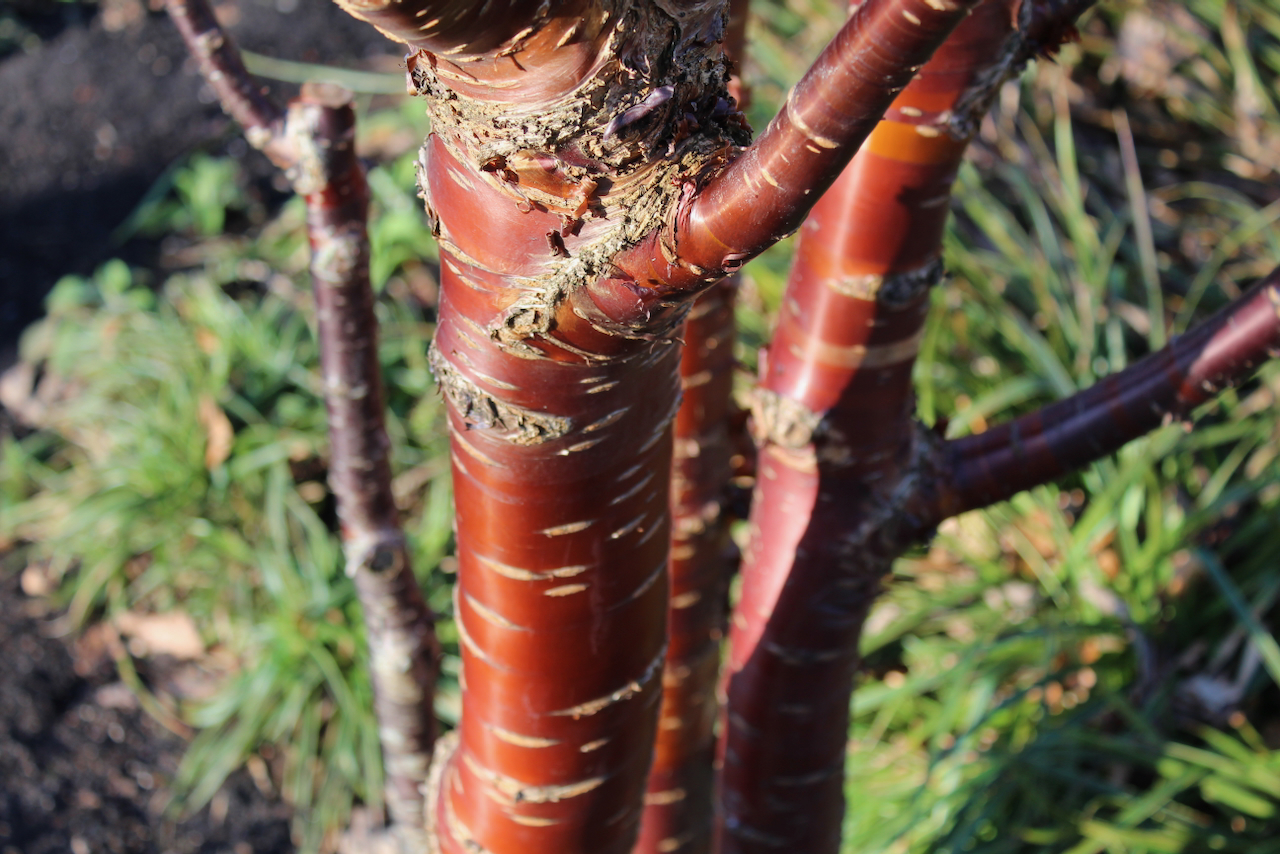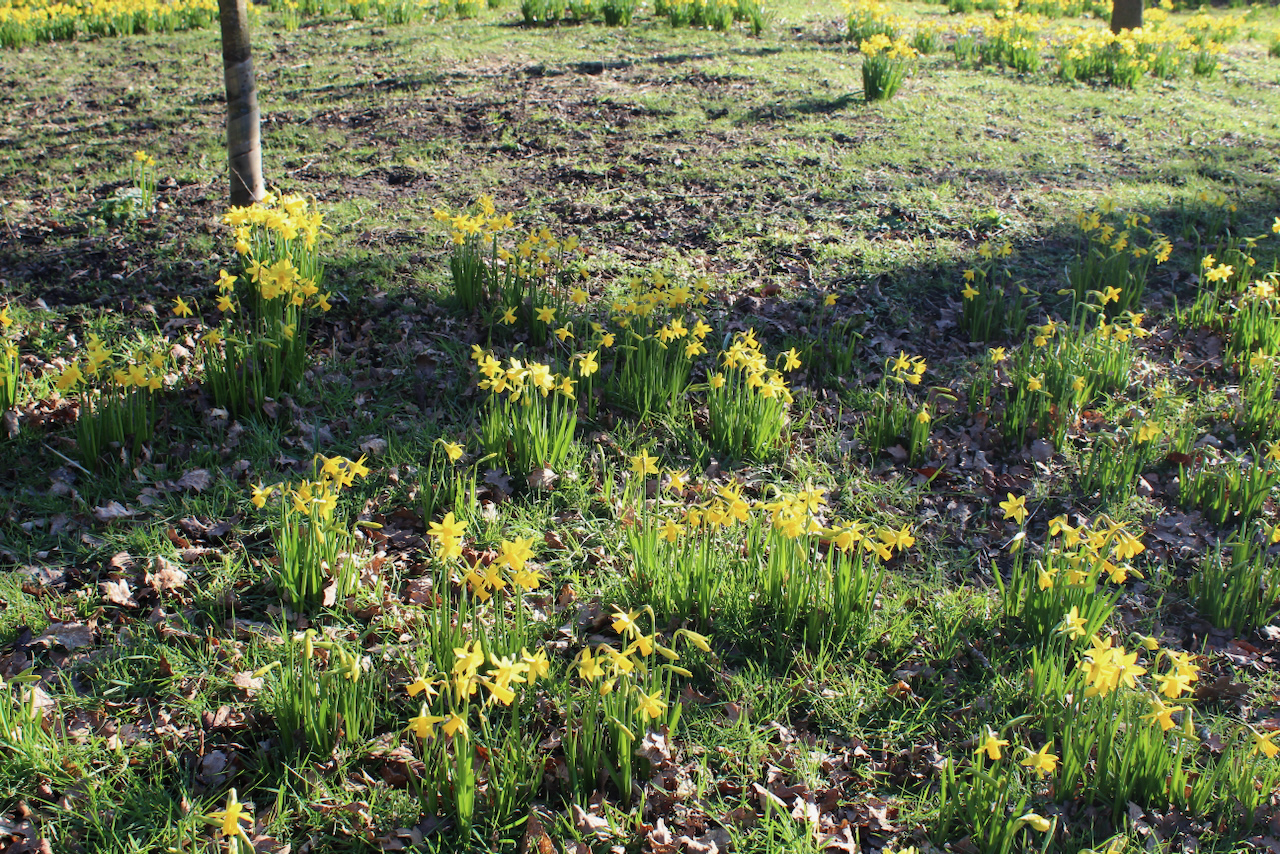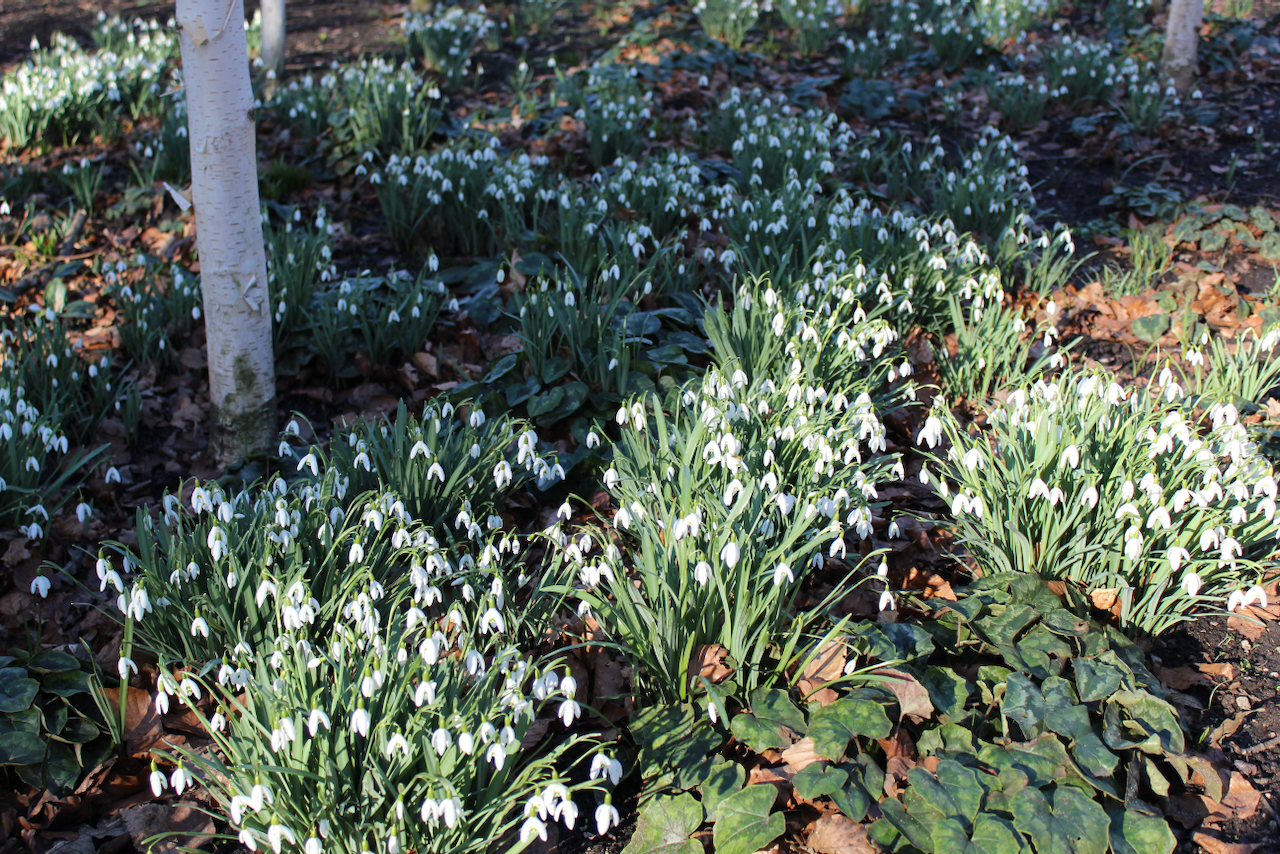When we think of the winter months in the garden, we are often faced with the thought of empty or dormant flower beds, bare skeletal trees or the need to escape the cold, wet weather and get back inside. Winter is not usually associated with any kind of active gardening or flowers blooming brightly but more the need to stay warm indoors.
However, did you know that winter gardens offer a glimmer of hope during these darker days, and some of them are just as impressive as the bold, floriferous displays of summer? Let's take a 'visual' walk around one of the best winter gardens here in the UK at Dunham Massey in the North West of England. Then maybe your opinion on winter gardening may change, and you never know it may inspire you to follow suit and add some winter interest to your gardens!
A Symphony of Winter Colours
Winter at Dunham Massey is anything but monochrome. The Winter Gardens burst into a symphony of colours from December through to early March, showcasing a carefully curated collection of plants and foliage that defy the misconception that winter lacks vibrancy. Vibrant berries, evergreen leaves, ghostly birch trees, yellow aconites, daffodils and hellebores all steal the show.
A winter garden is not just a collection of spring bulbs that emerge, show some promise, and then disappear. A winter garden uses all plant groups, from bulbs, herbaceous perennials, shrubs and trees, to create the winter garden style. Winter garden designers do this by making bold choices and curating a select few specimens at their prime from December to February, which are usually some of the most lacklustre gardening months without this planning. Dunham Massey is a prime example of this and is one of my favourite gardens to visit, wrapped up warm during the winter months.
Winter-Flowering Perennials, Shrubs and Trees
So, let's look at the groups of plants creating this stunning winter garden at Dunham Massey. These plants below will thrive here in the UK and can turn your gardens into a winter wonderland during the colder, frosty months.
Hamamelis (Witch Hazel)
The first show-stopper at Dunham Massey is the Witch Hazels. These unassuming shrubs spend spring and summer sitting idly with their large green leaves, minding their own business in the garden's shrub layer. Then autumn comes and strips their leaves, bearing their bare branches and closed buds. Any beginner gardener would wonder why you would pick such a plain Jane shrub, given it does very little in the warmer months.
However, from December to January, those tiny buds burst open to reveal highly scented fireworks of small delicate flowers. Their yellows, oranges and hot reds fire up the garden and, along with their scent, will stop you in your tracks. Witch Hazel has been saving its efforts for the coldest months of all, and aren't we grateful!
Super slow-growing and well-behaved witch hazels have a place in any sized garden and will even cope with some dappled shade.
Betula x utilis Jaqumontii (Ghost Birch/ Himalayan Silver Birch)

When is a tree, not just a tree? When it drops its leaves, it becomes a ghost tree like the Himalayan birch. Its bright white bark brightens the darkest gardens, and Birch can be a rather well-controlled tree for gardens of all sizes. At Dunham Massey, coppices of Birch planted on mass make for an eerie sight. The bright white, almost luminous bark acts as a spotlight in the garden. Interestingly, the Latin meaning of 'utilis' is 'useful', and that is one of the best descriptions of this tree species for the winter months.
Paperbark Maple (Acer griseum)

If the Birch has got you feeling chilly, then why not warm up with its rival, the paperbark maple and its ruby-red peeling bark? As its leaves fall in autumn, the bark brings metaphorical heat to the frosty months. Another tremendous small garden tree thats well behaved and pretty much pest-free. In spring, you even get tiny green flowers, almost like blossoms, that indicate spring is here, and we can ditch the scarves until next winter.
Fragrant Wintersweet (Chimonanthus praecox)
Follow your nose to the intoxicating scent of Wintersweet. Its pale yellow, spidery flowers release a sweet fragrance, providing a sensory delight amidst the winter air when walking through Dunham Massey. This slow-growing shrub erupts in pale yellow flowers on bare stems from February onwards. Ideally suited to a larger garden as it can grow quite wide, this shrub rivals other highly scented Daphnes and Witchhazels, so it should be planted on its own so the scents don't conflict. The stems with emerging flowers make excellent cut flower displays and are a more exciting alternative to Forsythia, another yellow late-winter flowering shrub.
Christmas Rose (Hellebores)
Discover the elegant charm of hellebores, often called the Christmas or Lenten rose, as these little hardy herbaceous perennials burst into flower from December through January. The true Christmas nose Helleborus niger has a bright white flower with yellow stamens, but there is Helleborus orientalis for dusky pink tones. These plants liven up otherwise sleeping flower beds, and their evergreen palate leaves add texture to the garden. If you're short on space in your flower beds, why not grow them in containers so they can be moved around the garden as and when the winter frosts begin?
Do be patient with smaller new Hellebores, as they can take a few years to get going. Once they start, though, they will be well-behaved and slowly bulk up. You can divide established hellebores in early spring. Lift the whole plant specimen, wash and find the crown, the thick white root below the leaves. Using a sharp knife, cut the crown into 3, making sure there are three buds on each division to ensure propagation success!
Snowdrops, Winter Aconites & Narcissis

Now, it wouldn't be a winter garden with the gems of the flower beds, the bulbs and tubers. These little beauties lie dormant all through the spring, summer and autumn before the low temperatures trigger them to emerge. At Dunham Massey, they have vast swathes of snowdrops (Galanthus), winter aconites (Eranthis hyemalis) - a bright yellow delicate flower which is a must if you want to be the envy of your neighbours and then the chorus lines of daffodils (Narcissus)—all of which flower before the tree canopies emerge in spring. The snowdrops look like freshly driven banks of snow here, and the yellow aconites and daffodils sing out in the garden. A simple palette of two colours, white and yellow, that, when mixed with the other winter shrubs and trees, make for a perfect picture of winter beauty.

The best part of this plant group is that they are all good value to buy, especially in autumn, as dormant bulbs or tubers are available. Low cost and ease of planting make this group of winter flowers accessible to all. Even if you don't have much space, you can even naturalise them in your lawns, all with just a spade and some enthusiasm. Watch the video guide below to show you everything you need to know about bulbs.
Summary
Dunham Massey showcases how careful winter plant selection, whether that be with colour, scent or form, like peeling bark, can transform any sized garden in the winter months. You don't need to sacrifice spring or summer blooms with many of these plants, as they will provide solid structure even in the summer (except bulbs and tubers, which disappear back into the soil).
When considering what you'll plant next season in the garden, why not think ahead for plants and trees that will help keep the gardening fire burning even in the dead of winter? After all, who wouldn't want to look out at a blast of winter fire while warming their toes in front of the fire indoors?
Happy Gardening,
Lee Garden Ninja
About Lee

Lee Burkhill aka the Garden Ninja is a multi-award-winning garden designer, horticulturist, garden blogger, vlogger, TV Presenter and YouTuber. Hailing from the North West of England, Lee has an infectious enthusiasm for helping gardeners all over the world. The Garden Ninja is his garden design business and online gardening blog, and he was recently voted one of the Top 10 Gardening Bloggers and Garden Vloggers in the UK. Lee is also part of the BBC Garden Rescue Team, which you can watch on weekdays at 3.45 pm on BBC One or BBC iPlayer. Here at Lazy Susan, we’re looking forward to sharing his exclusive horticultural tips, tricks and advice on our blog.
Follow Lee 



Please note that all the photographs in this article were taken by Lee and are the copyright of The Garden Ninja.



